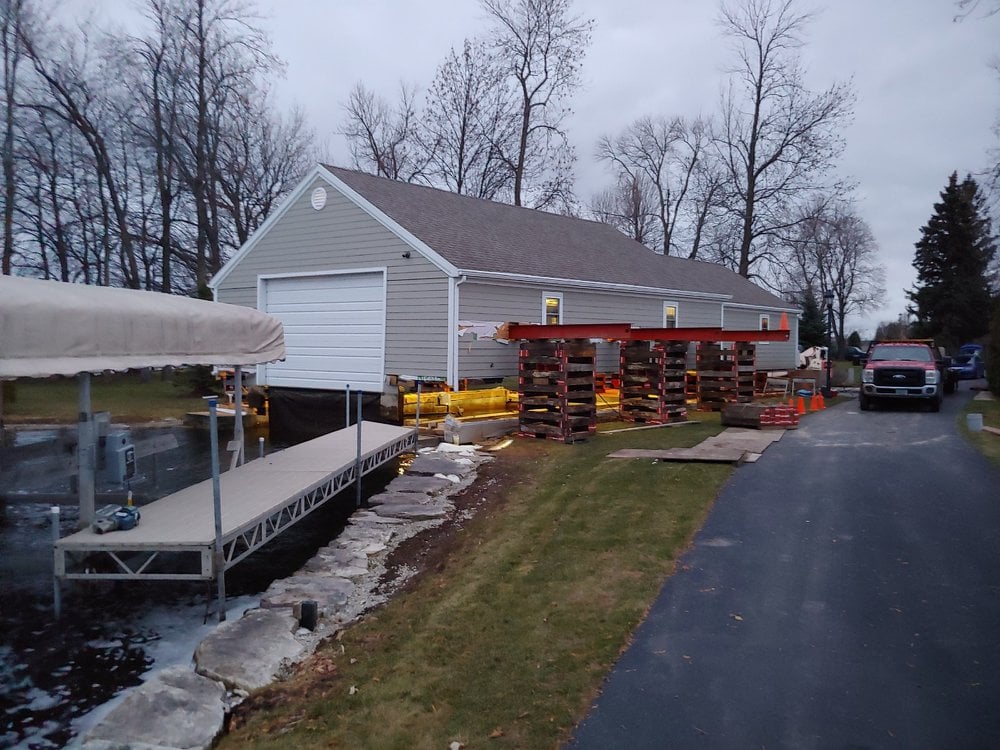If you’re wanting to boost the value of your building, protect it from flooding, add square footage, or even move it to a new property entirely, you can find contractors who are specifically equipped to do just that. But before your contractors can get to work, there is some prep work on your end that needs to happen. Below is a list of things you can do before your building is lifted or moved that will help the process to be as easy and smooth as possible.
Plan for the Long Haul
If you are wanting to move your building form one property to another, don’t expect the process to take up only a few hours of your time. Both lifting and moving a structure of any kind takes a ton of preparation. You’ll need to coordinate with your moving contractors, plus general contractors, your neighbors, and even utility companies if you’re relocating your building.
Moving your building to a different property can take anywhere from one day to several weeks depending on the distance and building size, among other factors. Go over your plans and the timelines with your moving contractor to make sure nothing takes you by surprise and so that you can plan to be out of your building for an extended amount of time, if necessary.
Disconnect Utilities
In both a lift and a move, you will need to disconnect all of the utilities in your building. Hiring a general contractor will be helpful in this step because they have the know-how to safely disconnect everything that needs to be disconnected.
Historic Buildings
If you’re looking to lift or relocate a historic building, there is a lot of paperwork that you’ll need to have together before the process starts. Each city or community has its own rules for the preservation and care of historic buildings. You’ll need to make sure that you’re abiding by all of the guidelines and regulations for making changes to historic buildings. Check out our article on historic building preservation to help you prepare for a lift or relocation.
Acquire Permits
Different states have different permit requirements for lifting and moving buildings. Depending on what type of building you’re moving and the purpose of your building, you’ll have to have specific permits. For example, commercial buildings will need different permits than small, private buildings for personal use. Get in touch with your local governing body to make sure you’re covering your bases as far as your permits and paperwork are concerned.
Clear Out the Crawlspace
Whether you’re lifting or relocating your building, you will need to clear out your basement or crawlspace. The supports used to lift your building will typically be set up underneath your foundation, which means anything below the ground floor needs to be cleared out.
Securing Your Things
When you’re lifting a building, you don’t typically need to secure your belongings. The lifting process is so gradual that there’s little risk of your things shifting or falling. But if you are moving your entire building to a different location, you’ll need to secure your fragile items. Bigger furnishings, like office furniture, will be fine. But if you have artwork on the walls, lamps, or other less sturdy objects, you’ll want to pack them securely in your building so that there’s zero risk of damage during the move.
Remove Outdoor Accessories
In both the lifting and the moving processes, your contractors will have to position their machinery very close to your building. If your building has a deck, porch, or furniture, you’ll need to remove those things before the day of the move or lift. Your landscaping will also be in harm’s way. Realize that you’ll either need to transplant your trees and shrubbery or cut your losses.
Purchase Short-Term Insurance
A good lifting or moving contractor will have insurance to cover your building’s move. However, it is a wise choice to purchase short-term insurance to cover unknown preexisting problems. Structural faults or lacking coverage by your utility contractors won’t be covered by the insurance policies of your moving contractor. When you get short term insurance, it’s a small investment that pays off in a huge way if you run into the unexpected.
Prepare the New Site
In preparing your building for a move, you can’t neglect preparing its new site. You’ll will need to pour a new foundation, secure utilities, and make sure you have the proper permits for whatever type of construction is going to take place on the new property.
In Conclusion
Lifting or moving your building is a big deal. But by following our advice, you can make sure you’re totally prepared for when the day comes. By covering your bases and planning for every outcome, you can rest assured that moving day will go smoothly for your entire team.

